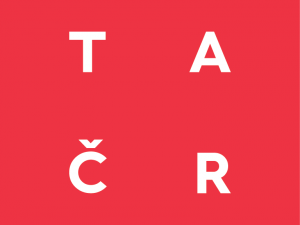Abstrakt:
Podprojekt je zaměřen na výzkum a aplikaci metod ML/AI v různých oblastech průmyslové automatizace – uchopování a manipulace, silová manipulace, spojení více strojů dohromady a optimální plánování jejich spolupráce.
I. Univerzální knihovna metod ML/AI
Cílem této oblasti je navrhovat, vyvíjet a testovat algoritmy a nástroje založené na sadě technik, včetně hlubokých neuronových sítí, v komplexních systémech za účelem zlepšení jejich funkčnosti a výkonu. Jejich aplikace zapadnou do autonomních řídicích systémů v kontextu Průmyslu 4.0. Zaměříme se také na regresní a klasifikační metody pro velké datové soubory, regularizační techniky pro tato data, rychlé klasifikátory pro vysokodimenzionální zpracování dat, algoritmy pro efektivní strojové učení založené na metodách jádra, meta-learningové algoritmy, detekci a prevenci protichůdných vzorů. Výsledky budou ve formě softwaru implementovaného na řadě architektur, včetně těch, které jsou určeny pro problémy se strojovým učením, jako jsou GPU nebo specializované neuroprocesory.
II. Uchopování a manipulace s předměty
Tato oblast pokrývá oblast tzv. bin pickingu a jeho zobecnění manipulace s obaly různých tvarů a velikostí, které lze jen těžko analyticky popsat. Takové balíčky mohou obsahovat různé druhy dílů, jejichž pozice v balíčku je náhodná. Pomocí strojového učení lze zajistit, aby uchopení bylo spolehlivé a nezávislé na typu a tvaru obsahu balení.
V reálném výrobním prostředí je většina těchto případů představována vychystáváním dílů z náhodně uspořádaných hromádek, přepravních a skladovacích zásobníků, vychystáváním z výrobních dopravníků atd.
Místo toho, abychom se spoléhali na přesné modely všech balíčků, abychom vypočítali, kde je má robot uchopit, plánujeme, že se robot naučí ze zkušeností a/nebo způsobu manipulace s balíčky pozorováním lidských operátorů a následně vyhodnocením úspěšnosti a poučit se z úspěšných zkoušek.
III. Robot delta pro vybírání a umísťování v závislosti na síle
Roboty vyhovující síle mají obvykle šest nebo sedm os, které jsou spojeny v otevřeném kinematickém řetězci. Robot může provádět své operace za použití konstantní síly podél prováděné trajektorie a také spolupracovat s lidskou obsluhou bez nebezpečí zranění obsluhy. Průmyslové roboty s otevřenou kinematikou se nejlépe hodí pro aplikace, které vyžadují univerzální chování a velký pracovní prostor.
Operace Pick & Place musí být v mnoha případech rychlé a pokrývají pouze omezený pracovní prostor.
Od vynálezu delta robota existují výrobci robotů, kteří nabízejí delta roboty typicky pro operace pick & place. Ovladače takových robotů jsou obvykle uzavřené a neumožňují žádné specifické úpravy, pokud jsou blíže fyzickému hardwaru, tedy nižší úrovně řízení. Našli se však i výrobci nabízející právě kinematiku vybavenou elektromotory, ke kterým lze připojit samostatný pohybový ovladač. To umožňuje navrhnout regulátor způsobem specifickým pro uživatele, který splňuje všechny nezbytné požadavky. S ohledem na cíl této oblasti v rámci NCC se takové řízení na nižší úrovni musí vypořádat se silovou zpětnou vazbou, aby bylo možné mít delta robota vyhovujícího síle.
 Tento projekt je spolufinancován se státní podporou Technologické agentury ČR v rámci Programu Národní centra kompetence 1: Program na podporu aplikovaného výzkumu, experimentálního vývoje a inovací.
Tento projekt je spolufinancován se státní podporou Technologické agentury ČR v rámci Programu Národní centra kompetence 1: Program na podporu aplikovaného výzkumu, experimentálního vývoje a inovací.

